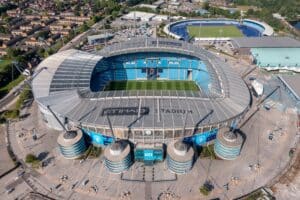
Japan’s second and third divisions of football were resumed over the weekend as the first batch of matches have been completed to begin the restart.
In total, 16 matches were played between the two divisions, making it the first competitive outing across Japan since all play was suspended in late February.
The J2 second division held nine matches in the second round of the league, while the J3 third division had seven matches in what was their opening round of the season. All matches were played behind closed doors.
However, for the moment fans won’t be able to attend matches, as one of the main strict protocols that the top-flight J1 League has imposed. They must be followed in order for matches to continue safely in a week’s time.
Measures such as regular testing for players and staff every two weeks, plus new rules when training and travelling are key to getting these competitions up and running.
All clubs will be required to announce if any players, staff members or close contacts have tested positive to ensure that matches can be played under medical recommendations.
Social distancing will be maintained wherever possible, as game day procedures have been outlined. Displaying club flags, handshakes and pennant exchanges are not allowed, while players and coaches need to be two metres apart for group photos.
During the match it is advised that handshakes, hugs and uniform exchanges cannot take place, while appropriate distancing must be kept in goal celebrations. Players are encouraged not to share water bottles and cool off their bodies by using sponges dipped in ice water.
In a cautious approach, fan-made banners and flags won’t be seen in the stands even behind closed doors. It aims to reduce the number of interactions between fans and club staff.These interactions also include the media, with Zoom utilised for post-match press conferences.
The J1 League won’t begin their restart until July 4, as their first batch of matches comes a week later than the other leagues. Depending on the ever-changing coronavirus situation, it is hoped that spectators can slowly return to games in the near future, by building up the crowd numbers.



























